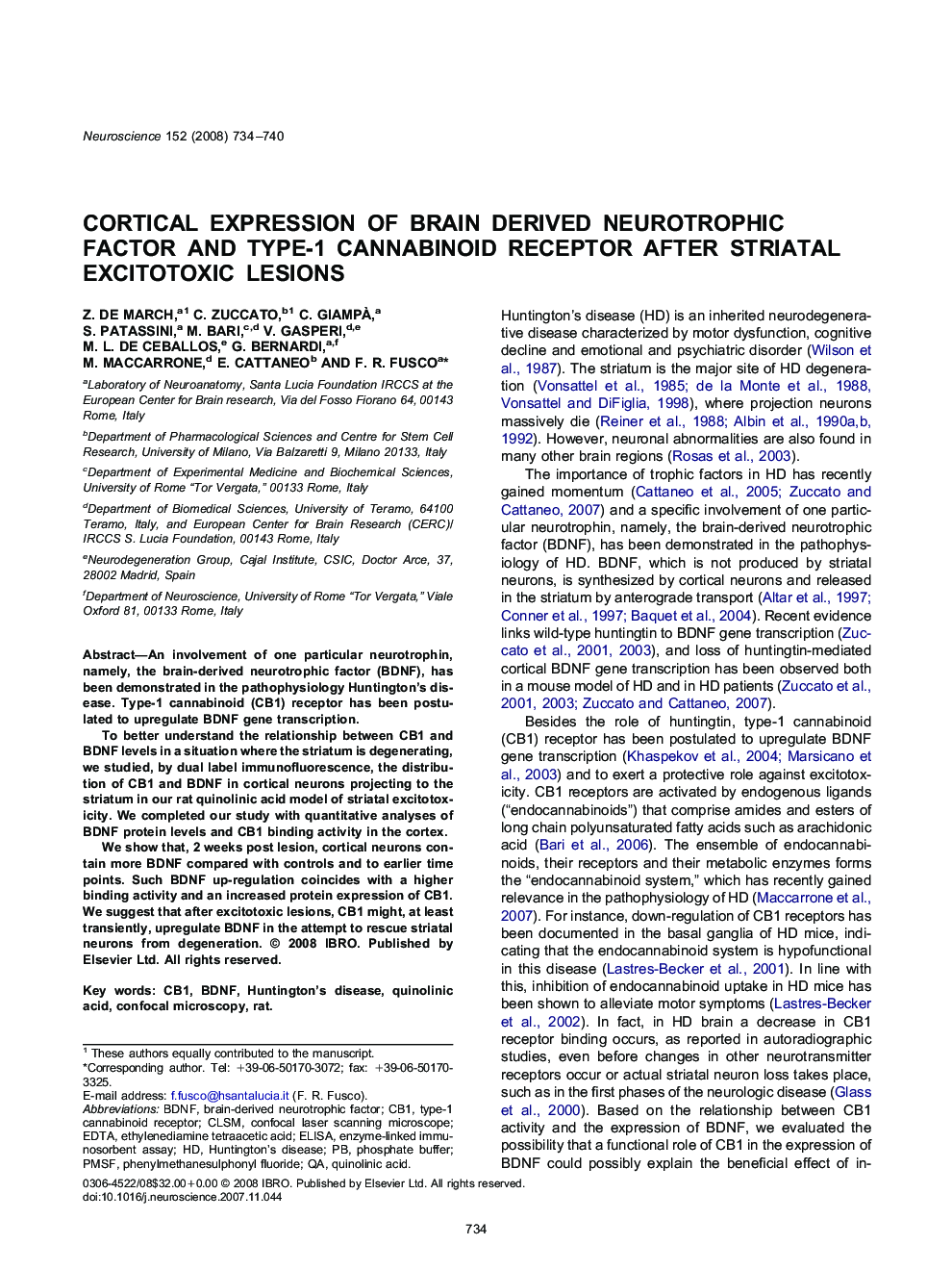| Article ID | Journal | Published Year | Pages | File Type |
|---|---|---|---|---|
| 4340901 | Neuroscience | 2008 | 7 Pages |
An involvement of one particular neurotrophin, namely, the brain-derived neurotrophic factor (BDNF), has been demonstrated in the pathophysiology Huntington’s disease. Type-1 cannabinoid (CB1) receptor has been postulated to upregulate BDNF gene transcription.To better understand the relationship between CB1 and BDNF levels in a situation where the striatum is degenerating, we studied, by dual label immunofluorescence, the distribution of CB1 and BDNF in cortical neurons projecting to the striatum in our rat quinolinic acid model of striatal excitotoxicity. We completed our study with quantitative analyses of BDNF protein levels and CB1 binding activity in the cortex.We show that, 2 weeks post lesion, cortical neurons contain more BDNF compared with controls and to earlier time points. Such BDNF up-regulation coincides with a higher binding activity and an increased protein expression of CB1. We suggest that after excitotoxic lesions, CB1 might, at least transiently, upregulate BDNF in the attempt to rescue striatal neurons from degeneration.
